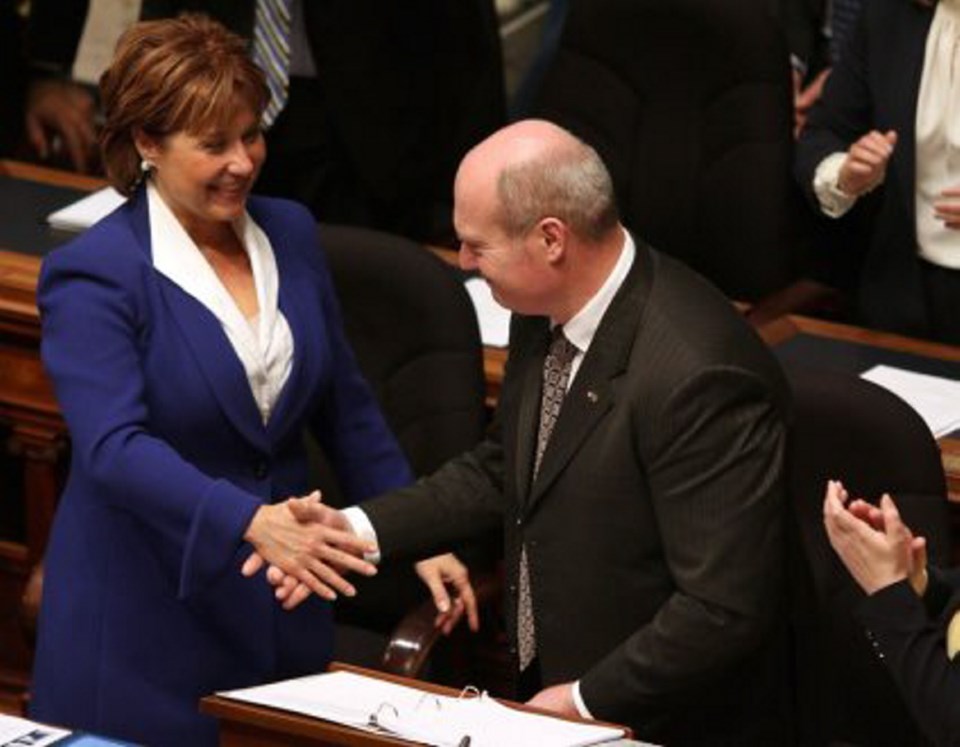 It was the wave of alarm about never-ending cost increases in health care a few years ago that brought the phrase “bending the curve” into common usage in political circles.
It was the wave of alarm about never-ending cost increases in health care a few years ago that brought the phrase “bending the curve” into common usage in political circles.
As in, bending the ascent line of the annual health budget so that it flattened out slightly. Annual increases are a given. Finance Minister Mike de Jong marked 22 years in politics this week, and noted in his first year the health budget was $6.4 billion. This year, it’s almost $18 billion.
The routine six to eight per cent increases every year had finance ministers across the country warning that health spending was steadily gobbling up an increasing share of provincial budgets. There were dire warnings that it had passed 30 per cent years ago, was hitting the 40 per cent mark and was headed for 50 per cent.
Provincial governments would soon be health-care funding machines that handled all the other functions on the side, or so the anxious argument went.
Ratcheting the rate of increase down slightly was made a priority, so that three per cent increases every year rather than six or seven per cent was taken as a win. When the B.C. Liberals first balanced the budget again after the economic meltdown, bending the health-spending curve was listed as one of the key moves.
This week’s fourth balanced budget shows that concept is still in force, and it’s working. The Treasury Board’s estimates that accompany the budget show that overall health spending is 41.4 per cent of the total $47.4-billion budget. And that share has declined fractionally over the past two years. It’s basically held steady at 41 to 42 per cent over the past four years.
That has shifted the tone of the rhetoric. Those dire warnings about unsustainablity have been replaced with boasting about new health spending.
De Jong said in his budget speech that it “continues to add more dollars to health care with $3.2 billion of additional funding overall for the health ministry in the next three years.”
He hailed the fact there’s a $560-million budget hike planned in 2018-19.
In an interview Wednesday, he recalled that when the move to cut health spending hikes from six and seven per cent down to three was first made, “people said: ‘You can’t do that, you can’t do that.’”
But the limit has held for a few years. De Jong said there are challenges and pressures, but the government is in a far better position.
The magnitude of the base is so great, however, that the unofficial three per cent limit still makes for huge amounts of money, he said. And it takes vigilance to hold the line, as it’s always under threat of going up.
Contract talks with the B.C. Nurses’ Union are underway, and it’s one of the bigger current cost pressures in the health sphere.
Health Minister Terry Lake said good relationships with doctors, limiting the cost of pharmaceuticals and lab services, and focusing on home and community care rather than acute-care facilities help control costs. Health spending would consume 50 per cent of the budget today if the curve hadn’t been bent, he said.
A new arrangement in the federal contribution might change the picture. The previous Conservative government was preparing to let a schedule of increases lapse. The new federal Liberal government opposed that idea, but the federal health transfer still needs to be negotiated. Lake said Ottawa now covers 22 per cent of the health care budget and he’d like to see that share increase to 25 per cent.
The other source of funding is the one that’s getting all the attention — the MSP premiums.
The system is redesigned so that monthly premiums for children are eliminated and premium assistance is widened. But the rate for adults will increase another four per cent next January, about $3 a month. And a break for couples will be eliminated, so that adult couples will pay $14 more a month.
Although more people will enjoy reductions, the overall revenue generated by MSP premiums is forecast to increase by about $350 million over three years, to almost $2.8 billion. Even with costs considered contained, someone has to pay for them.



